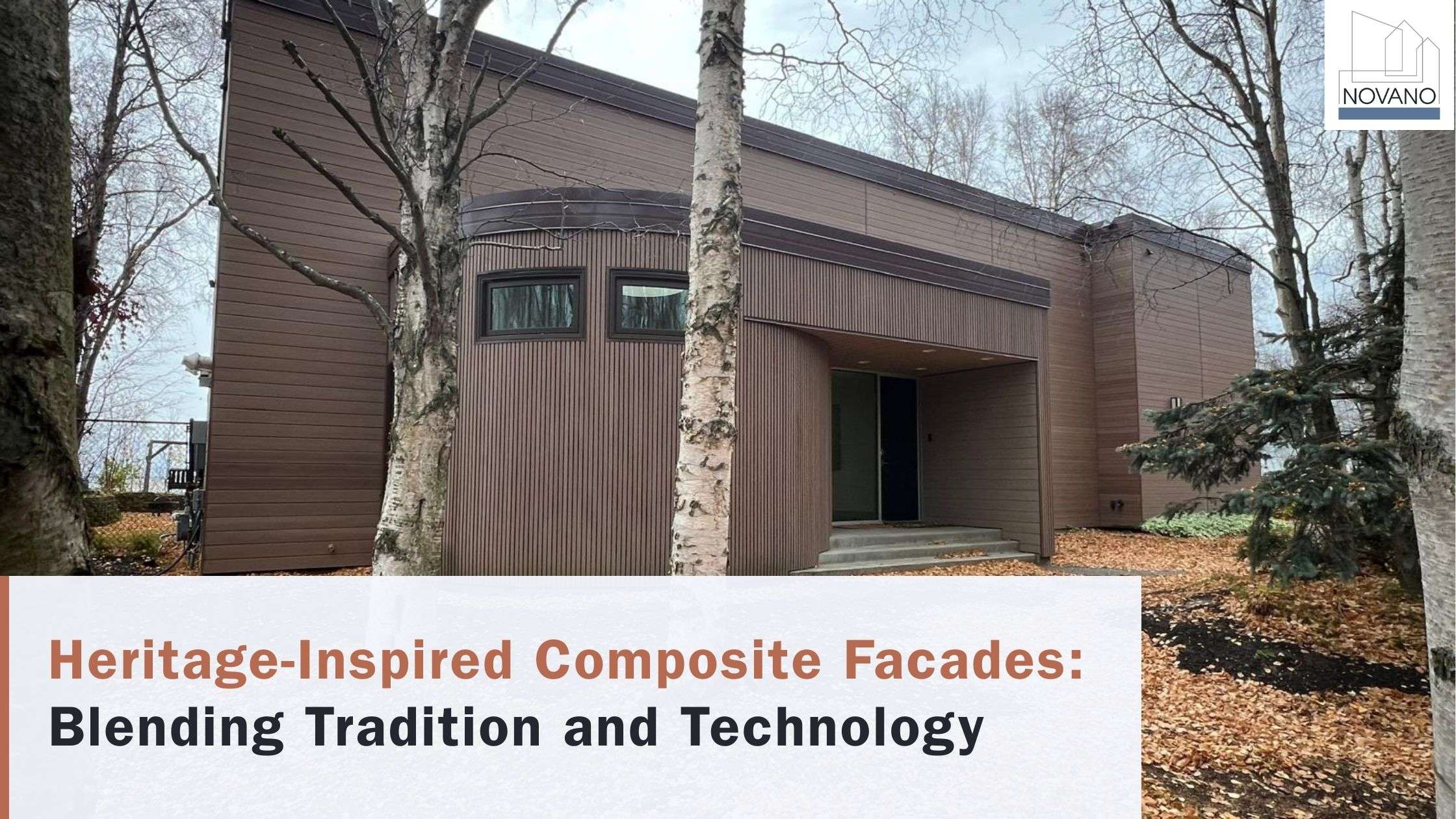
Summary
Heritage architecture continues to shape Europe’s built environment, and composite façades are redefining how tradition meets innovation. By replicating classical aesthetics while delivering durability, sustainability, and regulatory compliance, they ensure history and modernity coexist seamlessly.
- Summary
- Key Takeaways
- Understanding Heritage-Inspired Facade Design
- Role of Composite Materials in Heritage Design
- Design Approaches Using Composite Facades
- Case Applications in Modern Heritage Projects
- Sustainability Benefits of Composite Heritage Facades
- The Future of Heritage-Inspired Composite Facades
- Tradition Reimagined Through Composites
- FAQs
Heritage-Inspired Composite Facades: Blending Tradition and Technology
Reviving Heritage with Modern Materials
Across Europe, heritage-inspired architecture remains central to urban identity. Arches, timber details, and classical proportions still resonate with homeowners, architects, and city planners. Façades play a vital role in this connection, offering the first impression that ties buildings to their cultural roots.
Modern composite technology now provides a bridge between tradition and innovation. These materials replicate the timeless look of heritage design while delivering durability and sustainability that older materials struggle to match. The result is façades that honour history yet thrive in today’s demanding construction environment.
Key Takeaways
✓ Composite façades capture the elegance of heritage design without the ongoing problems of timber. They resist decay, cracking, and costly upkeep, making them ideal for long-term performance.
✓ Composite façades preserve heritage aesthetics while meeting today’s safety and performance standards.
✓ Novano provides heritage-inspired façades that balance tradition and modern technology, giving architects the confidence to design spaces that endure.
Understanding Heritage-Inspired Facade Design
Heritage-inspired façades borrow from historical architecture, using features like arches, timber textures, and decorative cornices. These details evoke continuity with cultural traditions while providing beauty and familiarity.
The challenge lies in balancing these aesthetics with modern requirements. Traditional wood may warp, crack, or decay, while stone is expensive and resource-heavy. Replicating historical looks with modern standards requires innovative approaches.
Façades define a building’s character. In heritage projects, they ensure cultural values are not lost to uniform modernism. Using composite materials allows cities to retain their historical identity without compromising safety, performance, or sustainability.
Role of Composite Materials in Heritage Design
Composite technology has transformed the possibilities for heritage-inspired façades. By mimicking the warmth and texture of timber, composites recreate historical charm without the weaknesses of natural wood.
Benefits include:
- Durability: Unlike wood, composites resist rot, warping, and insects.
- Performance: Fire, UV, and moisture resistance make them safe and compliant.
- Low maintenance: No painting or sealing needed, lowering lifetime costs.
- Authentic finishes: Long-lasting colours replicate classic styles.
NOVANO Building Products Europe provides composite façades that capture the look of heritage design while delivering the safety, performance, and sustainability today’s projects demand.
Design Approaches Using Composite Facades
Composite façades allow creative freedom in reinterpreting heritage architecture.
- Classical reinterpretations: Stone and timber effects achieved with lightweight, weather-resistant composites.
- Blended styles: Heritage motifs combined with sleek modern lines for balanced aesthetics.
- Colour palettes: Durable finishes designed to complement historic districts.
- Adaptive reuse: Perfect for extending or modernising listed buildings while maintaining architectural integrity.
These approaches provide architects with flexibility, ensuring heritage-inspired design is not limited by outdated materials.
Case Applications in Modern Heritage Projects
Composite façades are being used across diverse project types:
Project Type | Heritage Benefit | Composite Advantage |
Urban regeneration | Maintains continuity with historic areas | Long-lasting, low-maintenance finishes |
Hospitality & cultural | Creates a welcoming heritage ambience | Weather and UV resistance |
Residential projects | Retains local identity | Safe, sustainable, and affordable |
These applications highlight how composites empower architects to meet aesthetic, practical, and regulatory needs all at once.
Sustainability Benefits of Composite Heritage Facades
Sustainability is a pressing issue in construction. Composite façades directly contribute by:
- Reducing dependence on timber and natural stone, protecting natural ecosystems.
- Offering recyclable, wood-free materials that align with EU climate goals.
- Supporting circular design principles by extending product life and minimising waste.
The Future of Heritage-Inspired Composite Facades
Looking ahead, façades will not only balance tradition and innovation but also embrace smart technologies. Self-cleaning coatings, energy-efficient surfaces, and adaptive finishes will become more common.
Demand for façades that respect history while driving modern sustainability will continue to grow. Composite materials are poised to lead this evolution, supporting architectural creativity and compliance with ever-stricter climate policies.
Tradition Reimagined Through Composites
Heritage-inspired design connects modern living with cultural continuity. Composite façades make this possible by replicating the timeless beauty of traditional materials without their limitations.
Novano EU offers architects composite façade systems that blend history with modern performance. By choosing recyclable, durable, and regulation-ready materials, designers can confidently create façades that honour heritage while shaping a sustainable future.
Get FREE Samples of our siding and cladding to experience how modern, sustainable facades can transform your next project.
FAQs
How can composite façades replicate the look of heritage materials like timber or stone?
They are engineered with authentic textures and finishes that mimic the warmth of wood or the solidity of stone. Unlike natural materials, these finishes remain stable, weather-resistant, and low-maintenance.
Why are composites preferred for heritage-inspired projects in modern construction?
They combine heritage aesthetics with modern durability, resisting rot, UV damage, and fire risks. This makes them a practical choice where both visual authenticity and compliance are essential.
What role do composite façades play in sustainable urban regeneration?
They allow older neighbourhoods to retain their historic look while aligning with environmental goals. Composites reduce resource use, last longer, and support recycling, making regeneration projects both culturally and ecologically sustainable.

